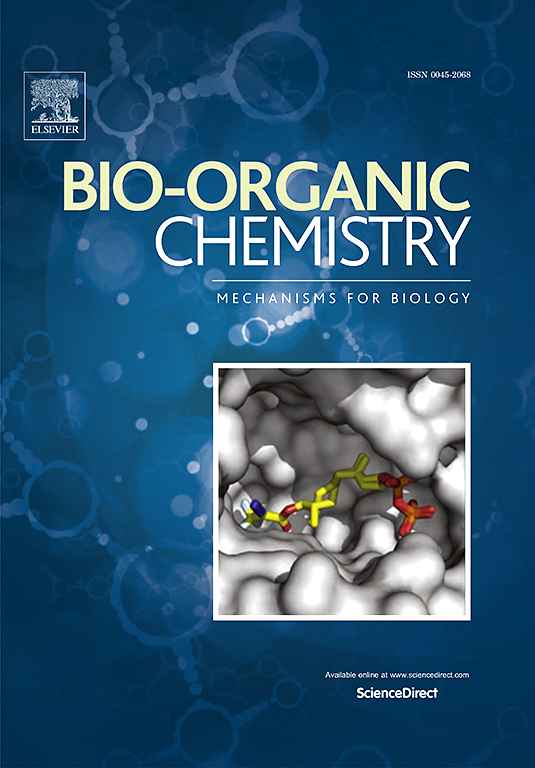Optimizing ST6GAL1 inhibition and selectivity using lithocholic acid-amino acid conjugates for antimetastatic and antiangiogenic agent development
IF 4.5
2区 医学
Q1 BIOCHEMISTRY & MOLECULAR BIOLOGY
引用次数: 0
Abstract
A series of LCA-aromatic amino acid conjugates were synthesized and tested for their inhibitory effects on N-glycan specific ST6GAL1 and O-glycan specific ST3GAL1. The LCA-amino acid conjugates with phenyl and indole moieties showed enhanced inhibitory activity and selectivity towards the N-glycan-specific ST6GAL1, with the indole-containing compound 4e exhibiting the highest activity (IC50 = 20.0 ± 0.5 μM). In addition, compound 4e exhibited the highest antimetastatic potential, effectively inhibiting MDA-MB-231 cell migration at non-cytotoxic concentrations. Compound 4e also suppressed tumor growth and metastasis in vivo, attributing to its potential to disrupt integrins sialylation. The conjugate has also demonstrated excellent antiangiogenetic properties in vitro and ex vivo, owing to its ability to downregulate the VEGF/VEGFR2/Akt pathway. Taken together, these findings prove the practicality of employing LCA as a scaffold and aromatic amino acid conjugation in the discovery of novel, potent, and selective ST inhibitors necessary to address abnormal cell surface α-2,6-N-sialylation.

求助全文
约1分钟内获得全文
求助全文
来源期刊

Bioorganic Chemistry
生物-生化与分子生物学
CiteScore
9.70
自引率
3.90%
发文量
679
审稿时长
31 days
期刊介绍:
Bioorganic Chemistry publishes research that addresses biological questions at the molecular level, using organic chemistry and principles of physical organic chemistry. The scope of the journal covers a range of topics at the organic chemistry-biology interface, including: enzyme catalysis, biotransformation and enzyme inhibition; nucleic acids chemistry; medicinal chemistry; natural product chemistry, natural product synthesis and natural product biosynthesis; antimicrobial agents; lipid and peptide chemistry; biophysical chemistry; biological probes; bio-orthogonal chemistry and biomimetic chemistry.
For manuscripts dealing with synthetic bioactive compounds, the Journal requires that the molecular target of the compounds described must be known, and must be demonstrated experimentally in the manuscript. For studies involving natural products, if the molecular target is unknown, some data beyond simple cell-based toxicity studies to provide insight into the mechanism of action is required. Studies supported by molecular docking are welcome, but must be supported by experimental data. The Journal does not consider manuscripts that are purely theoretical or computational in nature.
The Journal publishes regular articles, short communications and reviews. Reviews are normally invited by Editors or Editorial Board members. Authors of unsolicited reviews should first contact an Editor or Editorial Board member to determine whether the proposed article is within the scope of the Journal.
 求助内容:
求助内容: 应助结果提醒方式:
应助结果提醒方式:


